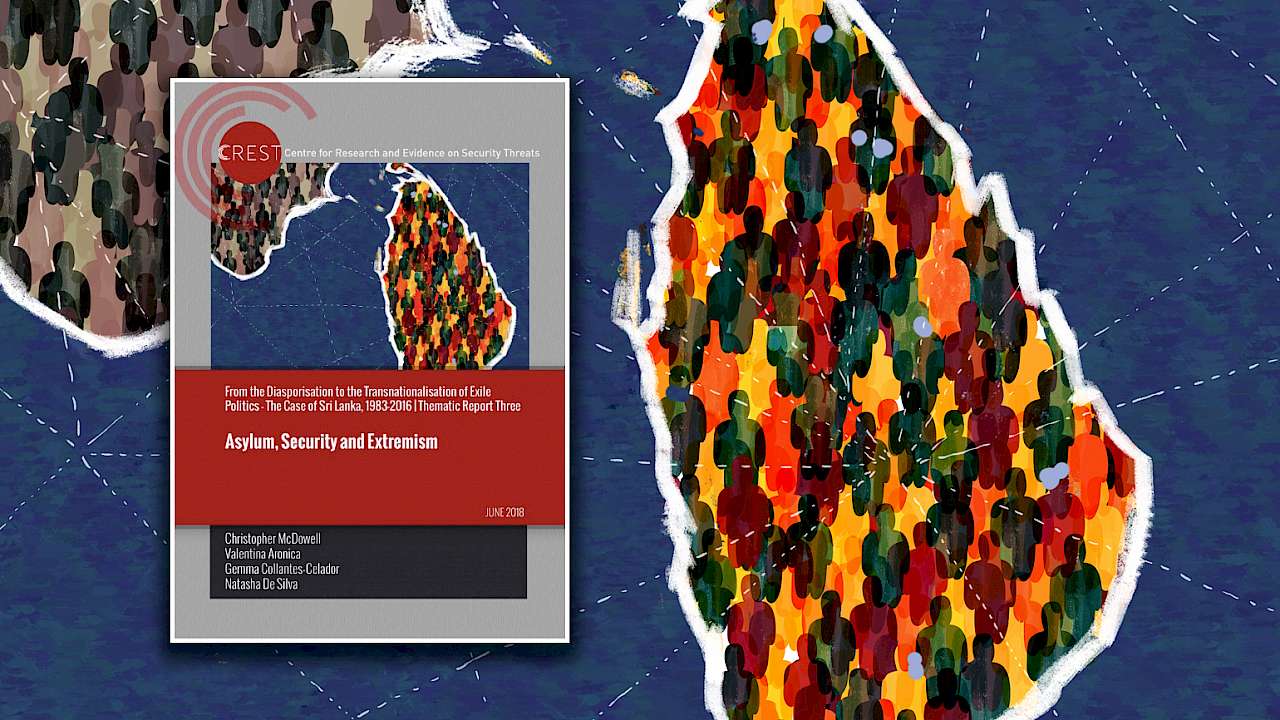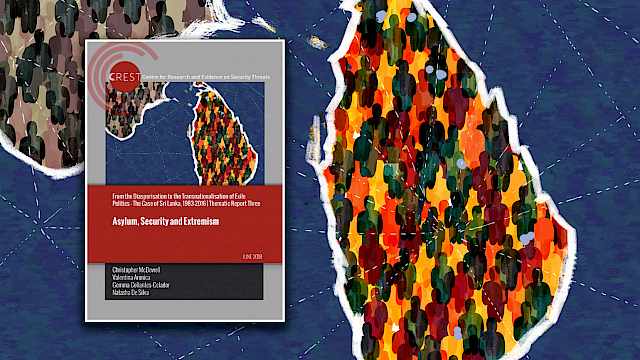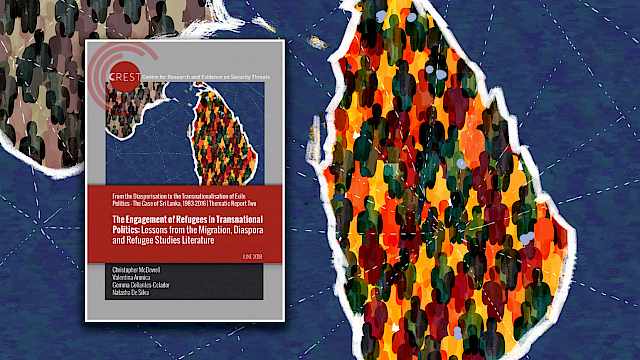The loss of control of borders in mass influxes is seen as a potential threat to national security
The forced displacement and cross-border onward migration of people as a result of conflict and generalised instability inevitably raises security concerns for states.
The loss of control of borders in mass influxes is seen as a potential threat to national security, and the protracted presence of refugees on another’s sovereign territory can undermine relations with neighbouring states and negatively affect regional stability.
Indeed, the decision of states to push refugees across their borders has the implicit intent of generating such insecurity, as does the deliberate destabilisation of camps and the militarisation of a camp’s population as a means to further conflict.
The economic costs of hosting refugee populations, in the absence of adequate international financial support, challenges national development plans with host populations concerned about the diversion of limited resources and competition for land, jobs, healthcare, and education opportunities.
Large scale refugee flows are also seen by some states as a threat to national identity where it is argued that cultural and religious differences cannot easily be reconciled in a context where a government loses control over the scale and pace of entry or the means to return unrecognised refugees to their country of origin.
At the same time, and specifically in response to refugee and migration flows from the Middle East over the past two years, some states, both in Europe and the region, while conscious of security issues, have opened their borders to people fleeing conflict, and others have for the first time participated in global protection initiatives such as Third Country Resettlement.
Beyond their international legal obligations and a stated humanitarian commitment to contribute to ‘burden-sharing’ in refugee responses (both European and global), countries see benefits and opportunities in accepting refugees as long-term citizens playing an important economic and social role in the development of the nation and its projection as a responsible global partner.
Over the past decade, however, and coinciding with the rise of transnational jihadism, territorial and societal security concerns about refugee flows and asylum-migration have been joined by more direct and immediate fears about the relationship between displacement, onward migration, the entry and settlement of refugees, and terrorism.
Parts of the United Nations, civil society, and human rights organisations reject the notion that migration can be associated with an increased terrorism threat, arguing that refugees and other migrants are victims of violence rather than perpetrators (Koser and Cunningham 2017: 209 – see also Neumann 2017) and that the global failure to address the exploitation of migrants and root causes of migration should instead be the main concern and priority of states.
The UN Special Rapporteur on Counter-Terrorism and Human Rights concluded in a 2016 report that ‘there is no evidence that migration leads to increased terrorist activity’ (cited in Crone 2017: 14), a message further reinforced in recent research undertaken by the Special Representative on Countering Radicalisation and Violent Extremism during Austria’s 2017 OSCE Chairmanship (Neumann 2017: 25).
However, the principal concerns expressed by security organisations such as Europol (2016 – cited in Crisp 2017; Crone 2017) and the German Federal Ministry for the Interior (2016), and drawing on Syrian migration in 2015 and 2016, are that agents of international jihadist groups have shown a capacity to recruit among displaced Syrians in the region, in transit and settlement, and that terrorists (including children as ‘sleepers’) were concealed among refugees and prepared to take part in terrorist attacks at some later date.
President Trump has been exceptional among Western leaders in arguing that a link, albeit of undefined causality, exists between migration and terrorism on US soil (US Department of Homeland Security 2018), and the policy response has included a scaling back of the US refugee resettlement programme (as other countries in Europe and Canada have expanded their programmes), a temporary ban on entry into the US from certain Muslim majority states (a policy that has not been replicated elsewhere), and a further review of the humanitarian visa programme.
Media reporting of terrorist attacks and legal proceedings now routinely report the migration or refugee profile of those implicated in or charged over attacks and such reporting will inevitably influence public perceptions of refugees, asylum-seekers, and any threats they are seen to pose. A Pew poll in 2016 reported that across ten EU countries included in the study, 59 per cent of respondents voiced concern about the prospect of increased terrorism in relation to the influx of refugees in 2015–2016 while a further 50 per cent worried about the economic burden of hosting refugees, fearing the loss of jobs and social benefits (Wike, Stokes, and Simmons 2016).
This report critically reviews the current academic state of knowledge on refugee movements and the security threat nexus. Drawing on the previous reports in this series, it seeks to better understand why forced displacement, onward migration, and refugee settlement in countries of asylum is increasingly linked to the threat of political extremism and terrorism.
It builds on the discussion in Thematic Report Two on the nature of refugee politics and what shapes individuals' political commitments to conflict at ‘home’ and what factors shape forms of political engagement internationally. It extends this discussion by considering the pathways through which engagement in diaspora politics could take an extreme form, including support for the use of violence.
Through an examination of the literature on critical security studies, and in particular ‘securitisation’, this report traces the process by which ‘the refugee’ is constructed as a threat, how that threat is understood by the state and by society more broadly, and how the evolution, dissemination, and consumption of the ‘threat’ comes to inform policymakers and the policy-making process.
Finally, this report reviews the radicalisation literature in relation to the known experiences of refugees throughout the forced displacement cycle as they seek to move from a place of danger to a place of safety.
It is shown that at various points on the cycle individuals confront situations that open doors to those who would seek to recruit and radicalise them, who may be drawn to extremist narratives, or who become dependent upon those who have the resources to provide routes out of danger.
Read more
- Thematic Report One | Understanding Transnational Diaspora Politics: A Conceptual Discussion explores the theoretical and conceptual basis underpinning academic debates on engagement in the politics of conflict and post-conflict by communities living overseas.
- Thematic Report Two | The Engagement of Refugees in Transnational Politics: Lessons from the Migration, Diaspora and Refugee Studies Literature analyses the context and drivers of political action among diaspora and refugee populations, engaging with the term ‘refugee politics’.
Copyright Information
As part of CREST’s commitment to open access research, this text is available under a Creative Commons BY-NC-SA 4.0 licence. Please refer to our Copyright page for full details.
IMAGE CREDITS: Copyright ©2024 R. Stevens / CREST (CC BY-SA 4.0)






